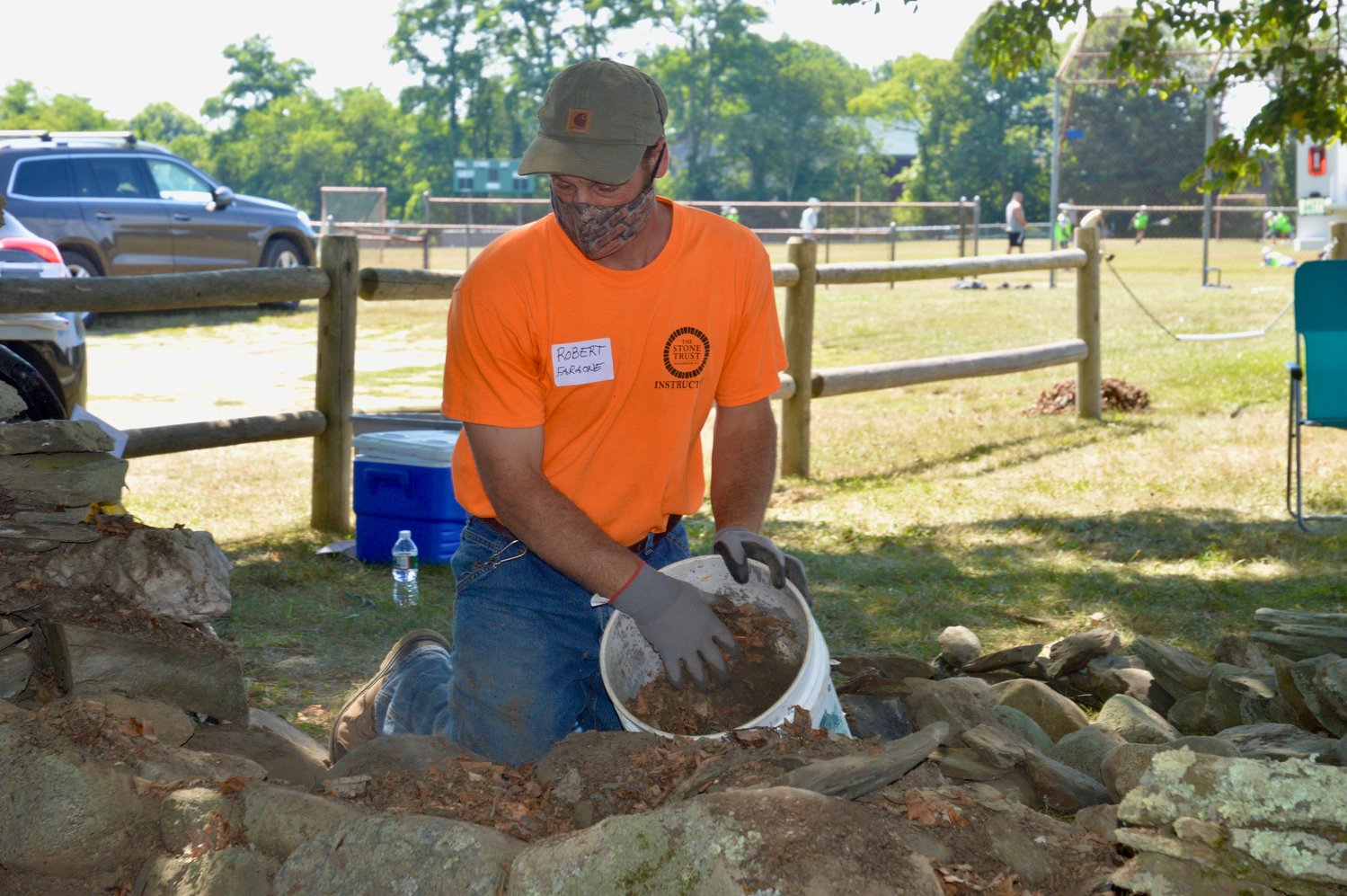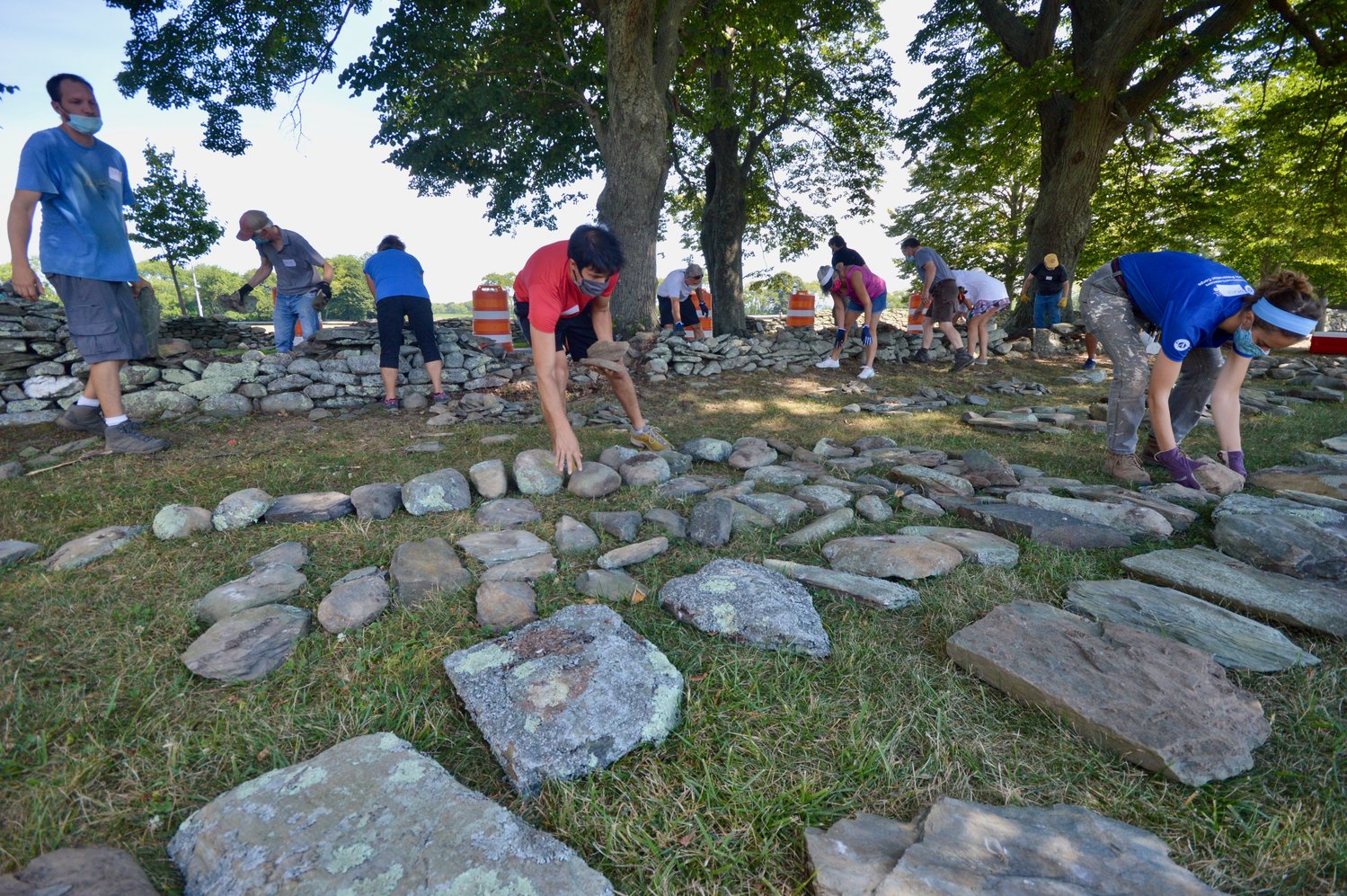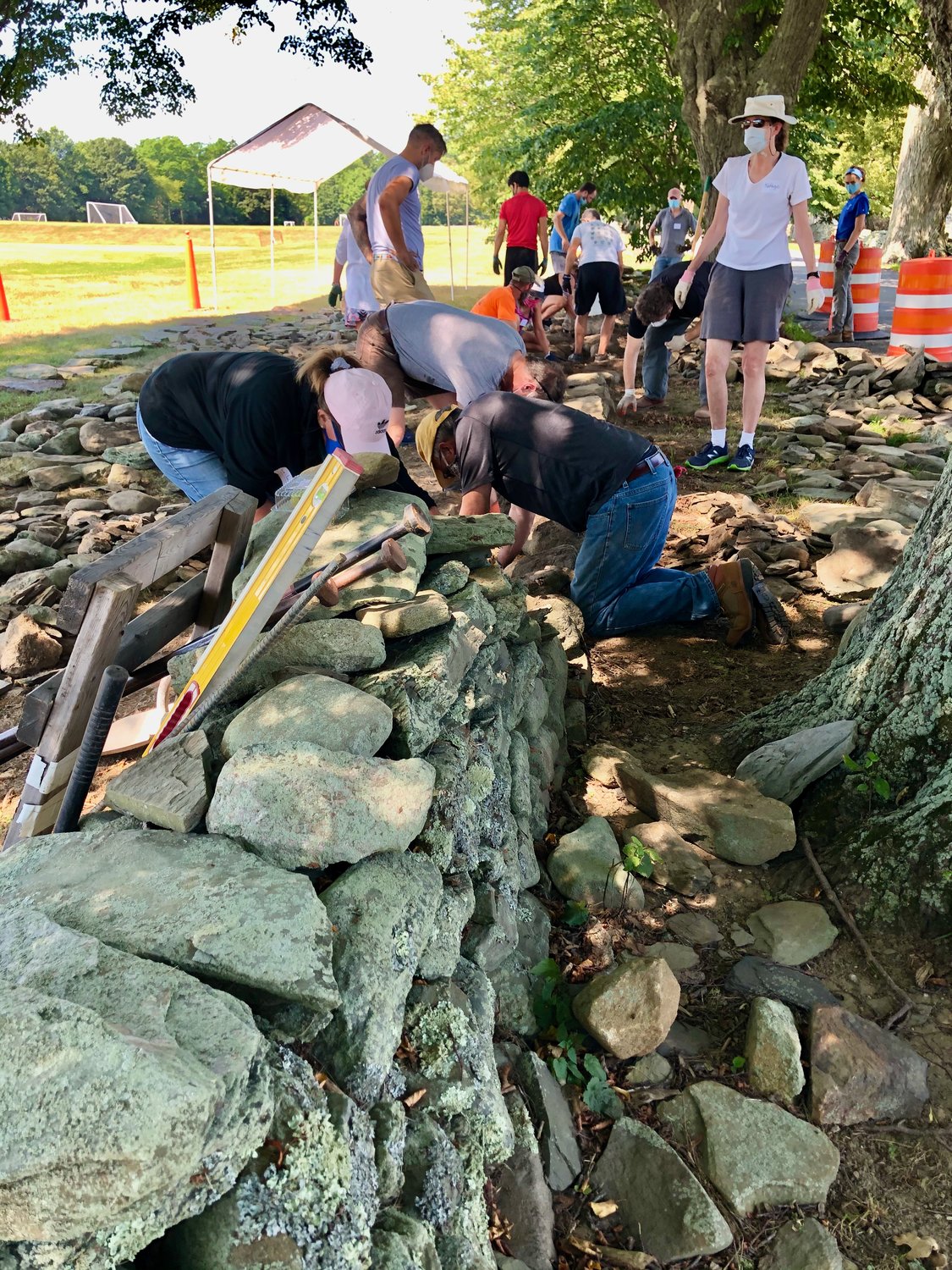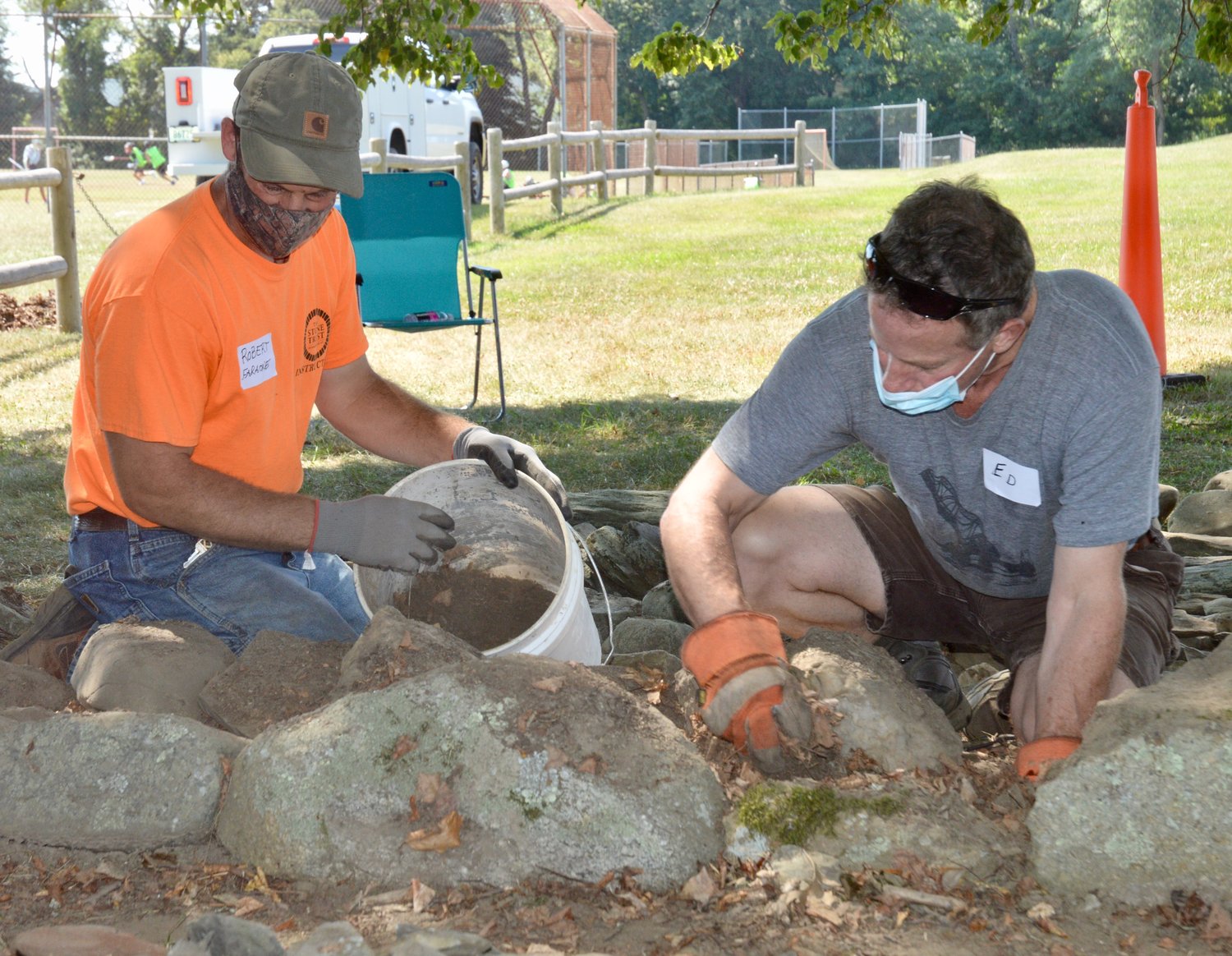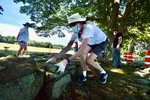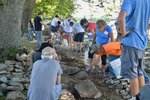- FRIDAY, APRIL 19, 2024
In Portsmouth: No bricks, no mortar
Volunteers learn the art of dry stone wall repair
PORTSMOUTH — Aquidneck Island may be best known for its miles of shoreline, but one of its other defining characteristics is the collection of vintage stone walls that dot the …
This item is available in full to subscribers.
Please log in to continue |
Register to post eventsIf you'd like to post an event to our calendar, you can create a free account by clicking here. Note that free accounts do not have access to our subscriber-only content. |
Day pass subscribers
Are you a day pass subscriber who needs to log in? Click here to continue.
In Portsmouth: No bricks, no mortar
Volunteers learn the art of dry stone wall repair
PORTSMOUTH — Aquidneck Island may be best known for its miles of shoreline, but one of its other defining characteristics is the collection of vintage stone walls that dot the landscape.
However, the majority of these walls, some well over 200 years old, are no longer looking their best. They’ve been neglected through lack of maintenance, and have been damaged by animals or people who have dislodged capping stones, or through vibration from heavy vehicles.
That’s where the Aquidneck Stone Wall Initiative comes in. The new program, a partnership between The Preservation Society of Newport County and Preserve Rhode Island, trains volunteers in the art of dry stone walling to protect the island’s archaeological heritage. The Initiative completed its pilot phase in 2018-2019 at two sites — Simmons Farm and Norman Bird Sanctuary, both in Middletown.
“Because of the amount of stone walls on Aquidneck Island, everybody’s kind of used to seeing them kind of falling apart, so if we can raise awareness of them and have more people who know how to work on them, hopefully it'll help us preserve more,” said Grace Gielink, program and property coordinator at Preserve Rhode Island.
The initiative receives financial support from the van Beuren Charitable Foundation as well as the Town of Portsmouth, which has been supporting the project’s most current training program at Glen Farm, which has no shortage of stone walls.
“These walls are probably late-1700s,” Ms. Gielink said of a stretch of wall along Linden Lane that about a dozen volunteers were working on during the second of two training days there on July 27. “There are a couple of people from Portsmouth, but also from all over the state. There are a couple from Massachusetts, too.”
One of the Portsmouth trainees was Kathryn Hannabury.
“I just thought I’d come out and get some exercise and get out of the house with COVID going on, but also help pitch in and help in the community,” she said. “The stone walls always look so nice and I would like to keep the history going and make the walls look pretty.”
Ms. Hannabury, who was busy taking out and sorting stones by their size and shape during the dismantling part for later rebuilding, said she was surprised by the amount of technique involved in the process.
“They handed out a brochure that we all went through thoroughly with the instructor,” she said. “We’d talk about the different types of stones, the different shapes, the good (technique) versus the bad. There’s clearly a lot of thought put into the process of how to build a good wall versus the wall that will collapse years down the road. So, the goal was to build a good stone wall that will last for another 100 years hopefully.”
Physically demanding
Dry stone walls are built without mortar, so their stability comes from the strategic selection and placement of stones. It’s a physically demanding job that also requires patience, positivity, and collaborative thinking, according to the Initiative
“It is physically challenging, but Rob also just gave us a good exercise to stretch our backs. They came prepared with water and the tools on how to do it,” Ms. Hannabury said.
Rob is Robert Faraone of The Stone Trust, who was leading the training session. He holds numerous certifications in stone wall masonry, including from the Dry Stone Walling Association of Great Britain and the Dry Stone Conservancy of Kentucky.
“But before that, I started as a mason when I was 17, out of the vocational school in Coventry,” said Mr. Faraone. “I worked for the same mason for 13 years and then went to a landscape company in Rhode Island, Landscape Creations, and then I went out on my own. I’ve been endeavoring in this dry stone thing since about 2015. It became more of a passion.”
While in the midst of one of the more tedious tasks involved in dry stone wall repair — separating the dirt, leaves and other debris that had caked onto the old stones over the years — he was asked what he loved about working on these walls so much.
“Everything about it — the hard work that goes into it, the dedication that’s necessary, the commitment, the drive, the willpower, overcoming an obstacle,” he said.
40 feet in one day
Ms. Gielink said the hands-on approach is the only way to truly learn how to rebuild a stone wall.
“We’ve got a couple of visual aids, so they’ve got a general idea of the building principles and how the wall should look, but you really don't find out until you start doing it,” she said.
The volunteers’ goal was to completely rebuild about 40 feet of the Linden Lane stone wall,
“If things need fixing, they might go back and rework some things. Rob will be pointing out where mistakes are being made where where he can give advice on things like how to turn the stone,” she said.
Volunteers who signed up for the project are expected to contribute at least seven, three-hour shifts (9 a.m. to noon and 12:30-3:30 p.m.) during the seven-week program that runs through Aug. 28.
“After they're trained, they'll keep volunteering with us for about seven weeks and then hopefully that will give them more skill,” said Ms. Gielink. “Hopefully, at some point, they'll have the confidence to be able to work on their own walls. They’re not going to take a whole wall apart, but they could fix something because they know how. They won’t be experts, but the more they (train), the more they’ll be able to do.”
Another couple of training sessions will be held at Norman Bird Sanctuary in September, she said. “Since people are being trained at Glen Farm, they can also volunteer with us at Norman Bird, so then we’ll have a bigger group.”
Ms. Hannabury was asked how she was holding up after moving so many heavy stones away from the wall while sorting.
“I’m meeting some nice people and everybody’s having a good time. Maybe if you came back at 3 o’clock, I’ll give you a different story!”
For more information, visit www.aquidneckstonewalls.org.
Please support your local news coverage
The COVID-19 pandemic has brought the local economy - and many of the advertisers who support our work - to a near standstill. During this unprecedented challenge, we continue to make our coronavirus coverage free to everyone at eastbayri.com - we believe it is our mission is to deliver vital information to our communities. If you believe local news is essential, especially during this crisis, please consider a tax-deductible donation.
Thank you for your support!
Matt Hayes, Portsmouth Times Publisher
Other items that may interest you


